Sawing Wood in the French Creek Valley
Last Revised: May 11, 2021
French Creek Valley Home
Back to Forestry
Contact Us
Introduction
We have been cutting out logs and having them milled into lumber here, since 1975.
But Here it is, year 2009 and I don't have a good history of those early years in the woods.
So, for the record, Here's what we have been up to lately:
2009 and Later----
In the fall of 2008 a number of trees were blown down in a big storm. Most of them were either pulled out of the ground or broken off
at about breast height. This spring I went up into our south woods and scavenged as many of them as I could.
I got logs of Black Ash, White Oak, Red Oak, Basswood, and even one 8 footer of White Ash. My son took down a medium sized Cherry
and a White Oak last fall.
I took them up to a friend's sawmill and had them sawn for various projects and to make a lot of shelving boards. I need
to rebuild 4 hay wagon beds and to straighten up an outbuilding. I had 4 X 6's sawn for the hay wagons and 6 X 6's sawn for
the building. We got a lot of Basswood and Black Ash boards, too.
Here are some pictures of the approximately 800 Board Feet that we sawed on Sep 9, 2009, as well as the 250Bf we sawed a
couple of months ago. You can see that a few of the boards weren't that great, but they'll mostly work for me. My friend charges $125/1000BF.
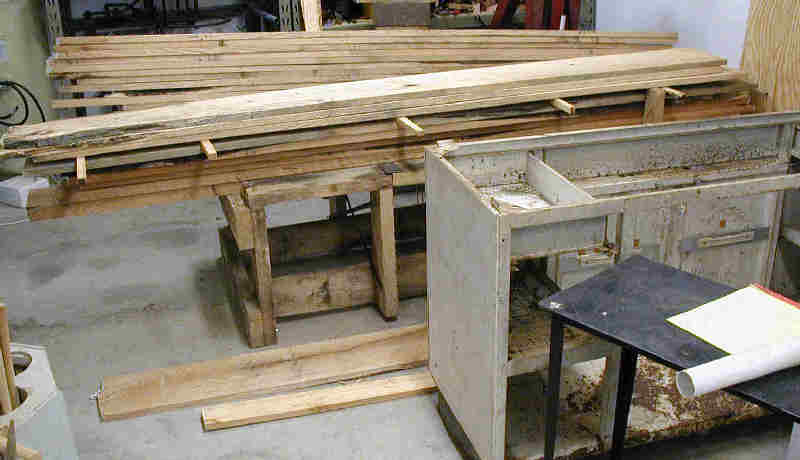
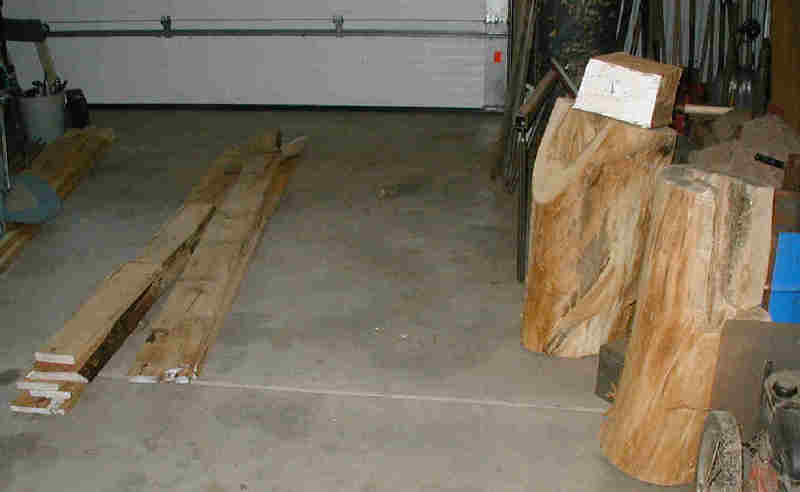
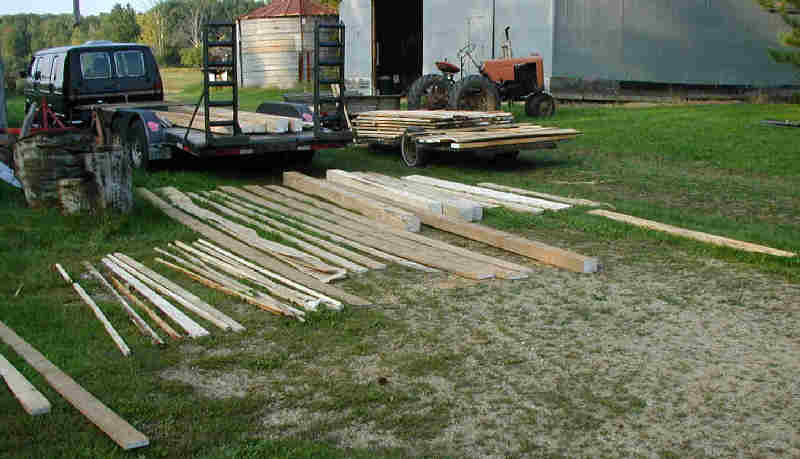

I just can't keep from "saving" mature or downed trees by turning them into rough sawn lumber.
We did it again in July of 2015 when we had another wind storm.
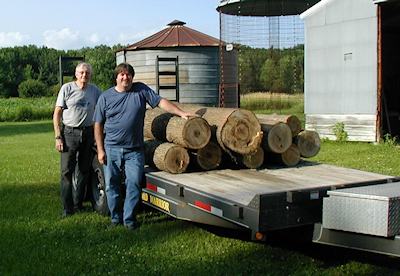
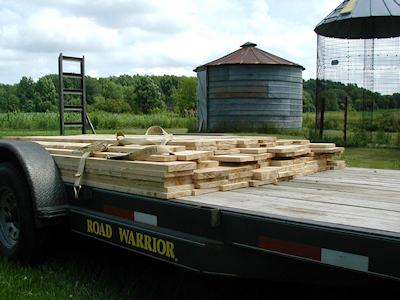
We had these black and white ash logs sawn by a local Amish farmer who has a ride-on bandsaw mill.
I think we also sawed a couple hundred bd ft of poplar at about the same time.
Late in 2015, the powerline people cleaned up the powerline easement on one edge of our property. They did take down a few
decent red oak trees and a couple of cherry. We kept 4 red oak logs and one cherry and had them bandsaw-milled in March of 2016.
That produced an additional 150 bd ft of lumber, some of which I had quarter sawn.
Most of it is on the top of this stickered stack:
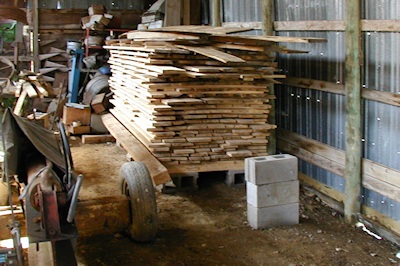
Now it's May of 2016 and I did it again:
More lumber!
I said I'd stop cutting logs and having them sawn into lumber about 2 years ago. but I just did it again.
Two driving forces this time:
1. We sold 40 acres with trees on one corner. Black Walnuts Spruce, etc,. that we had planted in about 1975.
The new owner has cut them all down in order to farm every square foot that he can. He offered to allow us to cut a
few logs from there, since we had grown the wood ourselves. My wife Sheri convinced me that we should take him up on his offer,
so we'd have some remembrance of that little plantation on the corner.
We took 6 small black walnut logs and one small basswood.
2. I have been trying to learn how to steam bend wood. And during that process had a lot of failures and a few successes.
One thing that I learned was that I had to have "quarter sawn" wood, preferably white oak, for best results.
See: How NOT to Steam Bend Wood
Anyway, I thought I'd solidify my new knowledge best by getting some oak quarter sawn properly and do a few more tests.
So---- as long as I was going to take those black walnuts to the saw mill, I might as well bring some white oak logs too. That way I could
direct the sawing to get exactly what I wanted.
----And I did it.
See the results, below. We got a total of about 350 board feet from this event.
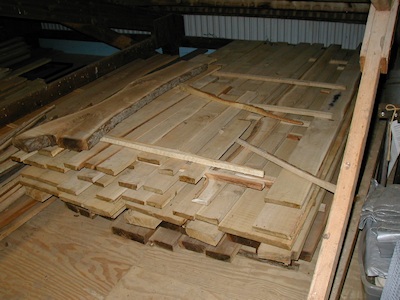
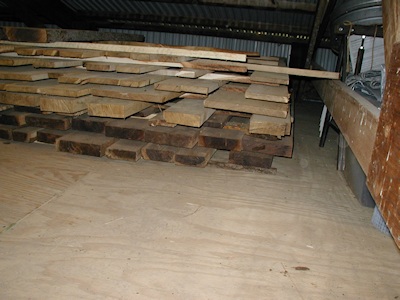
May of 2017;
Nere I begin reviving an old B. M. Root 36" wheel Bandsaw so I can Resaw boards as wide as about 12 inches to make my own thin boards.
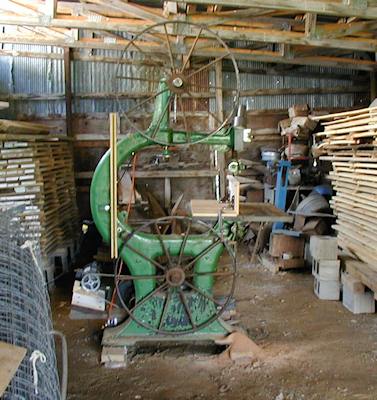
B M Root Bandsaw Restoration Youtube Playlist
July through December, 2020:
The powerline people have been at it again, just 5 years after the last easement clearing. But this time they cleared all the way to the edge of the legal easement.
That process took down some much older trees than they had cut previouly.
They made several piles of logs along the edge of the easement:
Assessing Powerline Easement Trees for Saw Logs
I sawed 27 logs out of all that and left the rest for the neighbors to use as firewood.
Our favorite local Amish band saw guy has left the area, so I finally located another Amish fellow (about 8 miles away) with a bandsaw mill.
I took two of my three loads of logs to him.
This time the plan is to produce all the two inch thick boards that we can get.
Powerline Easement Logs Ready for the Mill
Here is a picture of the first load of lumber, still on the trailer:
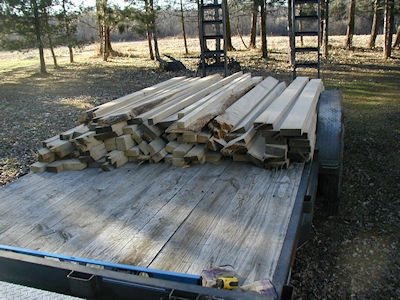
That was a bit over 500 bd ft from 3 white oak logs and one small cherry log.
Here those first two loads are stacked and stickered.
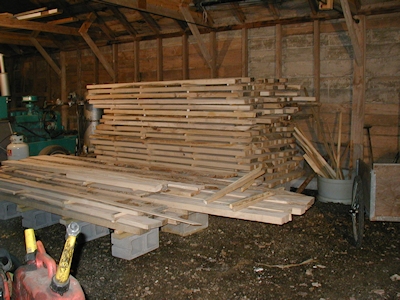
A bit over 1100 board feet so far. (There are still the last 8 smaller logs sitting at a different local bandsaw miller's place.
About half white oak. Then a mix of white ash, cherry, basswood, maple and maybe an elm.
Fast Forward to May 8, 2021. Here's the last of the powerline log milling, still on the trailer.
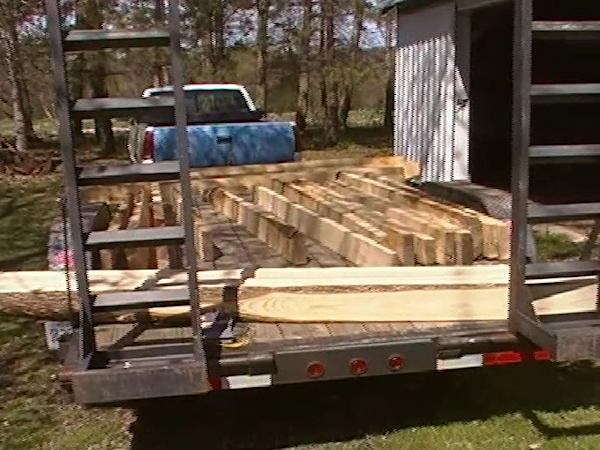
Again, almost all 8 quarters boards. A few 8 inches wide, a few 10 inches wide or more.
Mostly 8 footers, but a couple of tens.
I figure this batch, from the 8 small logs mentioned above, yielded about 280 board feet, not including a couple or thinner,
narrower boards and one short butt end of basswood that I just couldn't pass up.
Here's what the whole "Powerline Easement" log recovery looks like with those last boards stickered:
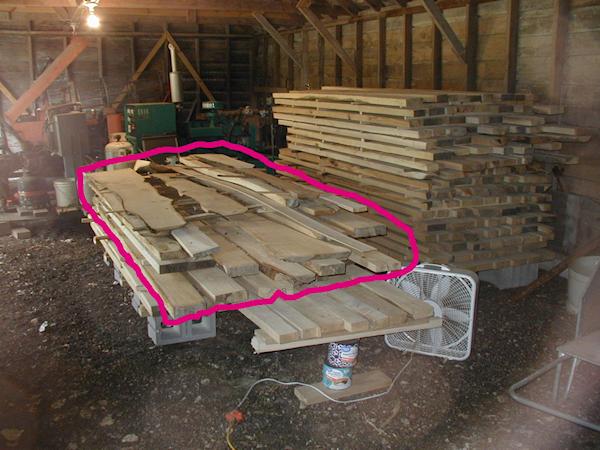
The boards within the pink circle are those last 21 boards plus the few thinner boards that we saved.
That's a grand total of about 1400 board feet from the whole "Powerline Easement" event!













